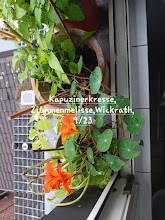dali48 and writing books and cycling & walking and photographing in the park of Wickrath etc.
ediary5
Interpretation of dali48
Janwillem Lincoln van de Wetering (1931 - 2008) was the author of a number of works in English and Dutch... Van de Wetering was born and raised in Rotterdam, but in later years he lived in South Africa, Japan, London, Colombia, Peru, Australia, Amsterdam and most recently in Surry, Maine, the setting of two of his Grijpstra and de Gier novels and his children's series about the porcupine Hugh Pine...
Van de Wetering studied Zen under the guidance of Oda Sessō, together with Walter Nowick, at Daitoku-ji. Van de Wetering lived a year in Daitoku-Ji and half a year with Nowick and described these in The Empty Mirror. Van de Wetering describes a visit to the monastery by the highly respected Hugo Enomiya-Lassalle, describing his own mixed thoughts about this representative of what he deemed an
old-fashioned religion. Sōkō Morinaga, Walter Nowick's Dharma brother, wrote in Novice to Master about traditional practices at that time... De Gier, younger and attractive with deep brown eyes and curly hair and most-often sporting a tasteful denim suit, is single, handsome, and very successful with women. Despite his womanizing, he is an avowed bachelor, and dedicated most to his Siamese cat Oliver (at least, in earlier novels). He is a dreamer and deep thinker, with discursive pondering about "the void,"
Zen, and life. A native of Rotterdam, he is, like Grijpstra, an amateur musician. He often carries a small flute, and in odd moments he and Grijpstra improvise together in their office... (Wikipedia)
Interpretation of dali48
Zhàozhōu Cōngshěn (Chinese: Chao-chou Ts'ung-shen; Japanese: Jōshū Jūshin) (778–897), was a Chán (Zen) Buddhist master especially known for his "paradoxical statements and strange deeds"...
Zhaozhou became ordained as a monk at an early age. At the age of 18, he met Nánquán Pǔyuàn (748–835; J: Nansen Fugan), a successor of Mǎzǔ Dàoyī (709–788; J. Baso Do-itsu), and eventually received the Dharma from him. When Nanquan asked Zhaozhou the koan "What is the Way?", the two had a dialogue, at the height of which Zhaozhou attained enlightenment. Zhaozhou continued to practice under Nanquan until the latter's death... Subsequently, Zhaozhou began to travel throughout China, visiting the prominent Chan masters of the time before finally, at the age of eighty, settling in Guānyīnyuàn, a ruined temple in northern China. Here, for the next 40 years, he taught a small group of monks... Zhaozhou is sometimes touted as the greatest Chan master of Tang dynasty China during a time when its hegemony was disintegrating as more and more regional military governors (jiédùshǐ) began to assert their power. Zhaozhou's lineage died out quickly due to the many wars and frequent purges of Buddhism in China at the time, and cannot be documented beyond the year 1000...
Many koans in both the Blue Cliff Record and The Gateless Gate concern Zhaozhou, with twelve cases in the former and five in the latter being attributed to him. He is, however, probably best known for the first koan in The Gateless Gate - A monk asked Chao-chou, "Has the dog Buddha-nature or not?" Chao-chou said, "Wu"... (Wikipedia)
tonymac04 from South Africa
Interesting Hub about Zen. I am exploring the Zen masters and like this info very much. Love and peace, Tony



Keine Kommentare:
Kommentar veröffentlichen